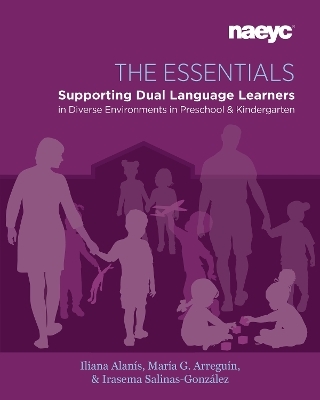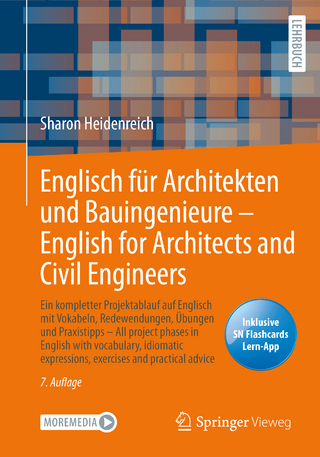
The Essentials
National Association for the Education of Young Children (Verlag)
978-1-938113-81-9 (ISBN)
- Lieferbar (Termin unbekannt)
- Versandkostenfrei innerhalb Deutschlands
- Auch auf Rechnung
- Verfügbarkeit in der Filiale vor Ort prüfen
- Artikel merken
This book is for early childhood educators who work or will work with the growing number of dual language learners, within the age range of three to five in family home centers, private preschool centers, Head Start classrooms, or state funded preschool and kindergarten programs. General education teachers, bilingual teachers, English as a second language teachers, and special education specialists will find the information useful. Instructional leaders, such as program directors and administrators, who work with children in preschool and kindergarten, will also find the information beneficial as they develop partnerships with families and colleagues.
This book answers the question what do early childhood educators need to understand to better address the linguistic, cognitive, and socio-emotional needs of all DLLs in their classrooms? The majority of the teachers in dual language programs with Spanish and English-dominant speakers learn academic content in two languages. It is through this lens that the authors have approached the writing of this text. There are however, over 350 languages spoken within the U.S (U.S. Census, 2015). This means emergent bilingual children come from a variety of cultural and linguistic backgrounds. While teachers cannot be expected to teach in all languages, the basic principles of this book help teachers gain a richer understanding of the interdependent relationship among culture, language, and learning. With this understanding, teachers can implement intentional practices that nurture children’s bilingual identities and augment their growth in all developmental domains through the concepts and strategies presented in this text.
Iliana Alanís, PhD, a native of South Texas, is a professor of early childhood and elementary education in the department of interdisciplinary learning and teaching at the University of Texas–San Antonio. She taught children in bilingual first- and second-grade classrooms while earning a master’s degree in curriculum and instruction with a concentration in bilingual education from the University of Texas–Pan American. María G. Arreguín, EdD, is an associate professor of early childhood and elementary education in the department of interdisciplinary learning and teaching at the University of Texas–San Antonio. She earned her doctoral degree in Bilingual Education at the Texas A&M University–Kingsville. Her research on dual language education, early childhood education, dyad learning and dialogue, and critical science pedagogy illuminates the intricacies of cultural and linguistic factors that influence minority children’s access to education in early childhood and elementary bilingual settings. Irasema Salinas-González, EdD, is an associate professor and coordinator of the early care and early childhood studies program at the University of Texas–Rio Grande Valley (UTRGV). During her 29 years in the bilingual and early childhood education fields, she has been a preschool and kindergarten teacher and reading specialist, and has worked with preservice and in-service teachers. She received her MEd in Early Childhood Education from the University of Texas–Pan American and her EdD in Bilingual Education from Texas A&M University–Kingsville. Her work focuses on language and literacy development of young dual language learners through play, the development of cognitive skills of dual language learners through play-based learning, and creating engaging classroom environments for young dual language learners.
Acknowledgements
About the Book
Part 1: Understanding the Essentials
Chapter 1: Who are Your Dual Language Learners?
Chapter 2: What Does it Mean to Develop Two Languages?
Chapter 3: What Should I Consider When Implementing a Dual Language Program?
Part 2: Supporting Learning and Development
Chapter 4: Creating Culturally and Linguistically Diverse Environments for Dual Language Learners
Chapter 5: Understanding and Facilitating Play
Chapter 6: Developing Bilingualism and Biliteracy Across the Content Areas
Chapter 7: Learning Through a Second Language
Chapter 8: Designing Authentic Assessment
Chapter 9: A Glimpse into Ms. Rocha’s Classroom: An Integrated Lesson
Additional Resources
Glossary
About the Authors
Index
| Erscheinungsdatum | 04.05.2021 |
|---|---|
| Zusatzinfo | Photos, charts, tables |
| Verlagsort | Washington DC |
| Sprache | englisch |
| Maße | 203 x 254 mm |
| Themenwelt | Geisteswissenschaften ► Sprach- / Literaturwissenschaft ► Sprachwissenschaft |
| Sozialwissenschaften ► Pädagogik ► Didaktik | |
| Sozialwissenschaften ► Pädagogik ► Schulpädagogik / Grundschule | |
| Sozialwissenschaften ► Pädagogik ► Vorschulpädagogik | |
| ISBN-10 | 1-938113-81-0 / 1938113810 |
| ISBN-13 | 978-1-938113-81-9 / 9781938113819 |
| Zustand | Neuware |
| Haben Sie eine Frage zum Produkt? |
aus dem Bereich


